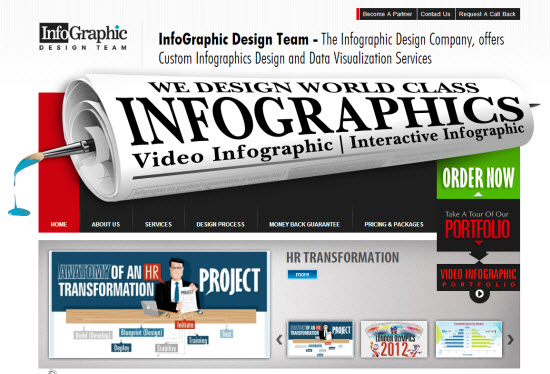Information Overload: A Great Infographic Is Worth a Thousand Words
The web is crammed full of words. There is enough content to keep you reading until you take your last breath, even if that moment is still 100 years from now. So far for the good news ;-) The bad news is, the web grows faster than you could ever possibly keep up with. Sooner or later, any netizen will suffer from information overload. I know I do already. This will become a growing problem for brands and their communication strategies as they will need to cut their messages short or risk to not get noticed. If you ask me, one of the best ways to deal with this necessity is the infographic...




Infographics are on a Triumphal March
Any writer knows it. If you can spice up any given post with a relevant infographic, the readers will love it. People are visually oriented, images appeal to the eye and they sure help break up the gray a little. But it's not only that infographics are more beautiful to look at, additionally people are much quicker to comprehend the topic if it is supported by images. There is no doubt, the saying "an image is worth a thousand words" has not lost any of its power, and truth, for that matter... Furthermore, coming back to information overload, infographics can help reduce this problem, too. On the one hand, we know people like images, people are faster to comprehend messages supported by images. On the other hand we know, people have to deal with more and more information in a more rational, time-saving way to prevent themselves from overload. It's obvious, almost trivial: Use infographics for your brand communication and kill two birds with one stone. The web has seen the relevance of infographics rise fast and high. Infographics are the next big thing. But, not every infographic is a good infographic. If you fail, you do your brand more bad than good. And we all know, there are more bad infographics out there than good ones. The infographics universe reminds me of Microsoft's Powerpoint in its golden years, which still is responsible for massive boredom in countless meetings worldwide, even today. Although with Powerpoint you can create brilliant presentations, yet most people just don't do that. The tool needs to be used with a level of skill and creativity most people completely lack. The same is true when we look at infographics. Everybody hates bad infographics, and rightfully so. What you need to know, when you decide to have an infographic help you with brand communication or any other message you'd like to spread, is: You have to do it right at the first throw!There is No Second Chance for a First Impression
Chances are, you will need support, professionals able to come up with great ideas and equipped with the skills it takes to transform the great idea into a great infographic. Don't try it on your own, if you don't breathe Adobe air all day long, be it in the flavor of Photoshop or Illustrator. We here at Noupe just recently teamed up with the very capable crew over at InfoGraphic Design Team. They have an impressive portfolio with around 50 different infographics to show (they did loads more already) and they can look back at works for some of the better known brands of the world. What convinced us most, was their unrivalled money back guarantee, which basically says, if you don't like it, you get your money back. No strings attached. And what convinced me, personally, was their pricing. They are not cheap, yet they are not expensive either. What keeps me from accepting cheap offers is my love for the design industry. What we see in client relationships these days more often than not resembles daylight robbery. No need to argue about that. More and more designers see no other opportunity than to go the risky path of self-exploitation just to make a living. No one should support these tendencies. Seen from this angle, it's a good thing that InfoGraphics Design Team is able to pay their designers adequate fees by not bowing down to the pricing strategies of the next best junk shop. With a team of around a hundred designers and data analysts, the results InfoGraphics Design Team delivers don't follow a certain design language, which is a good thing. Instead you won't be able to recognize two different infographics as stemming from the same team. Look at the following two examples to see what I mean:


Great example with Powerpoint…. I couldn’t agree more. Just because you create an infographic, doesn’t mean it will get your message across or entice your audience. Thanks for the share!